Most of the time, when gardeners talk of shade, it’s always about how it could potentially stunt a plant’s growth or even kill it. But, thankfully, there are many plants out there that this doesn’t apply to, and we’ve compiled some of the most beautiful of them for you.
Hostas
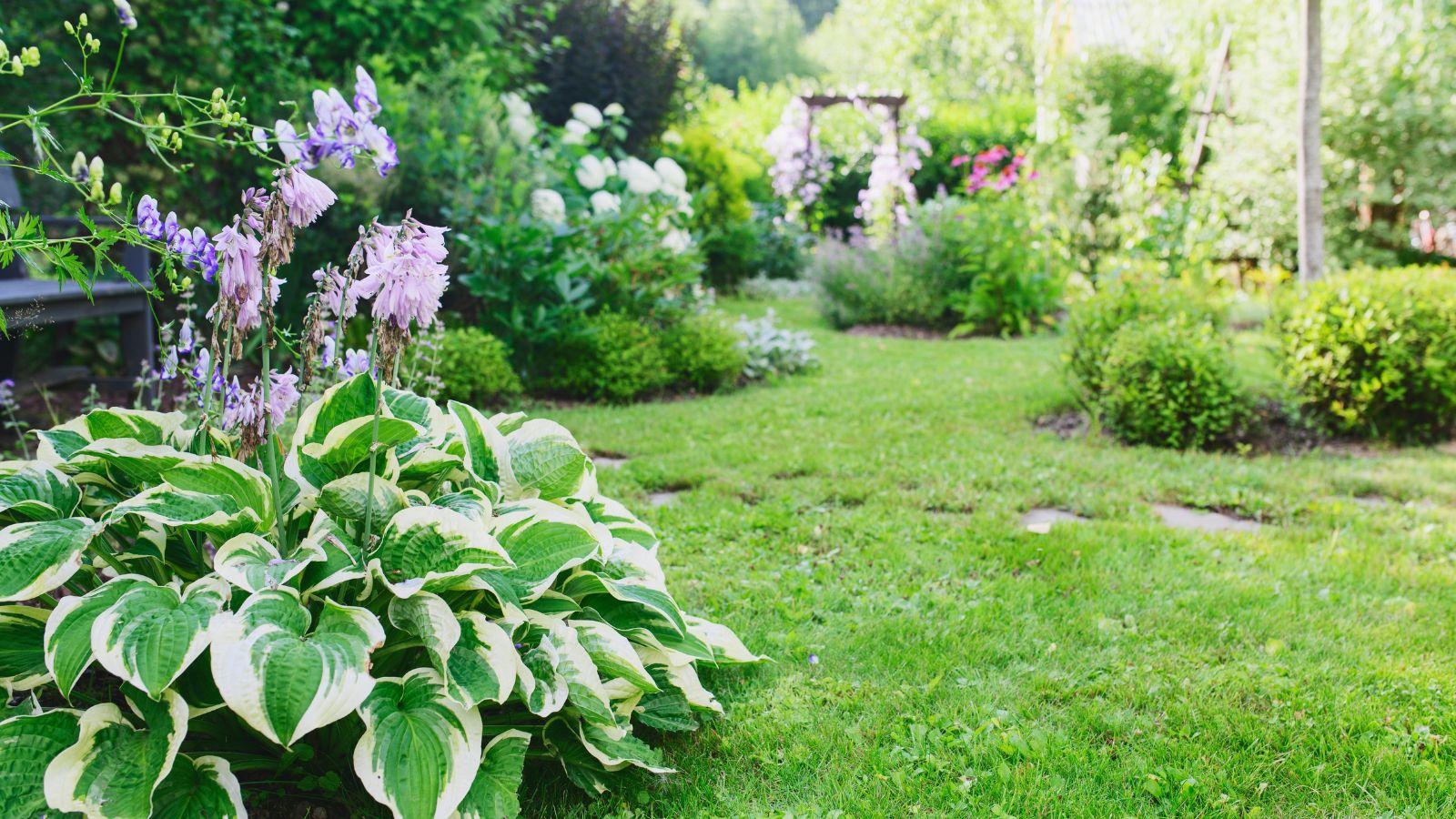
Although this depends on the variety you have, most hostas do quite well (and even flourish more) in full, partial, or complete shade. These hardy perennials are a popular choice for many people due to their bright color and pattern variety, lush foliage, and low-maintenance nature.
Ferns
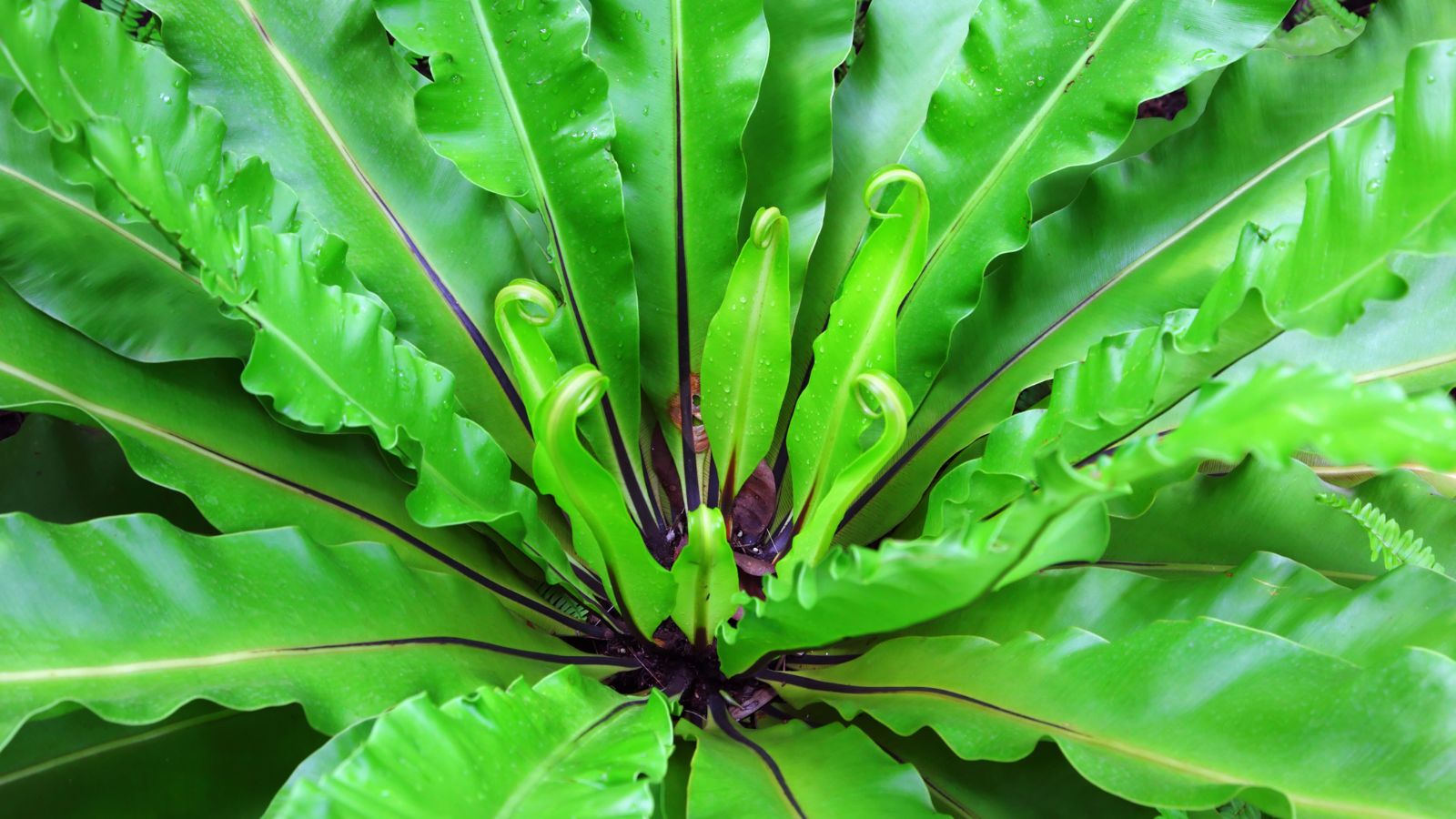
Ferns are classic shade plants that will add a touch of elegance to your garden or wherever you wish to put them. They have a soft, hairy look that makes them unique, and for the best results, SDSU says that it’s best to put them in an area that receives a bit of sunlight.
Japanese Forest Grass
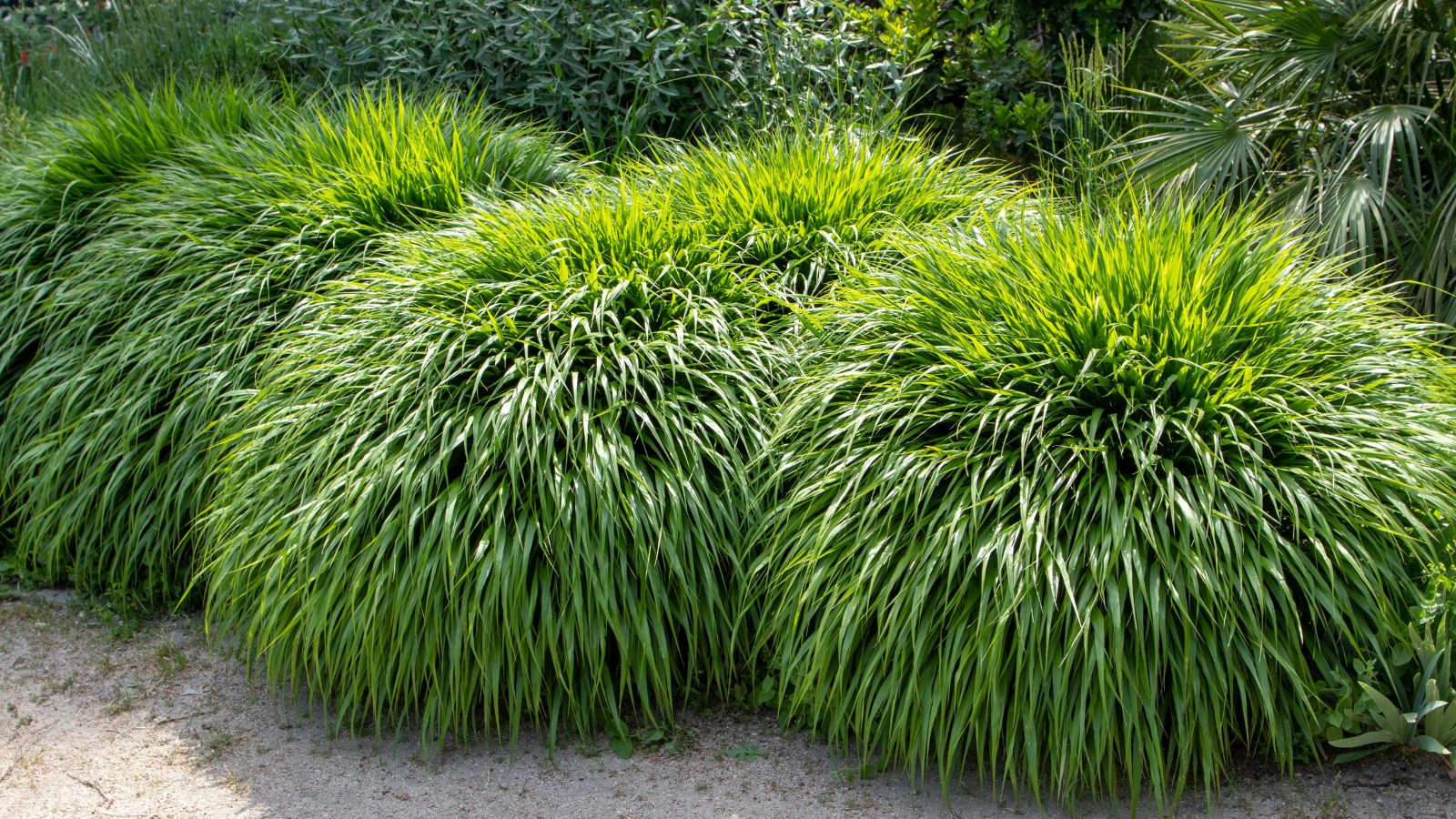
Japanese forest grass, or Hakonechloa, thrives in partial or dappled shade with its arching, bamboo-like leaves that can be green, gold, or variegated. Adding a splash of color and movement, this ornamental grass is perfect for ground cover or borders, and when grown in full shade, Wisconsin Horticulture says its leaves have a dark green hue.
Bleeding Heart
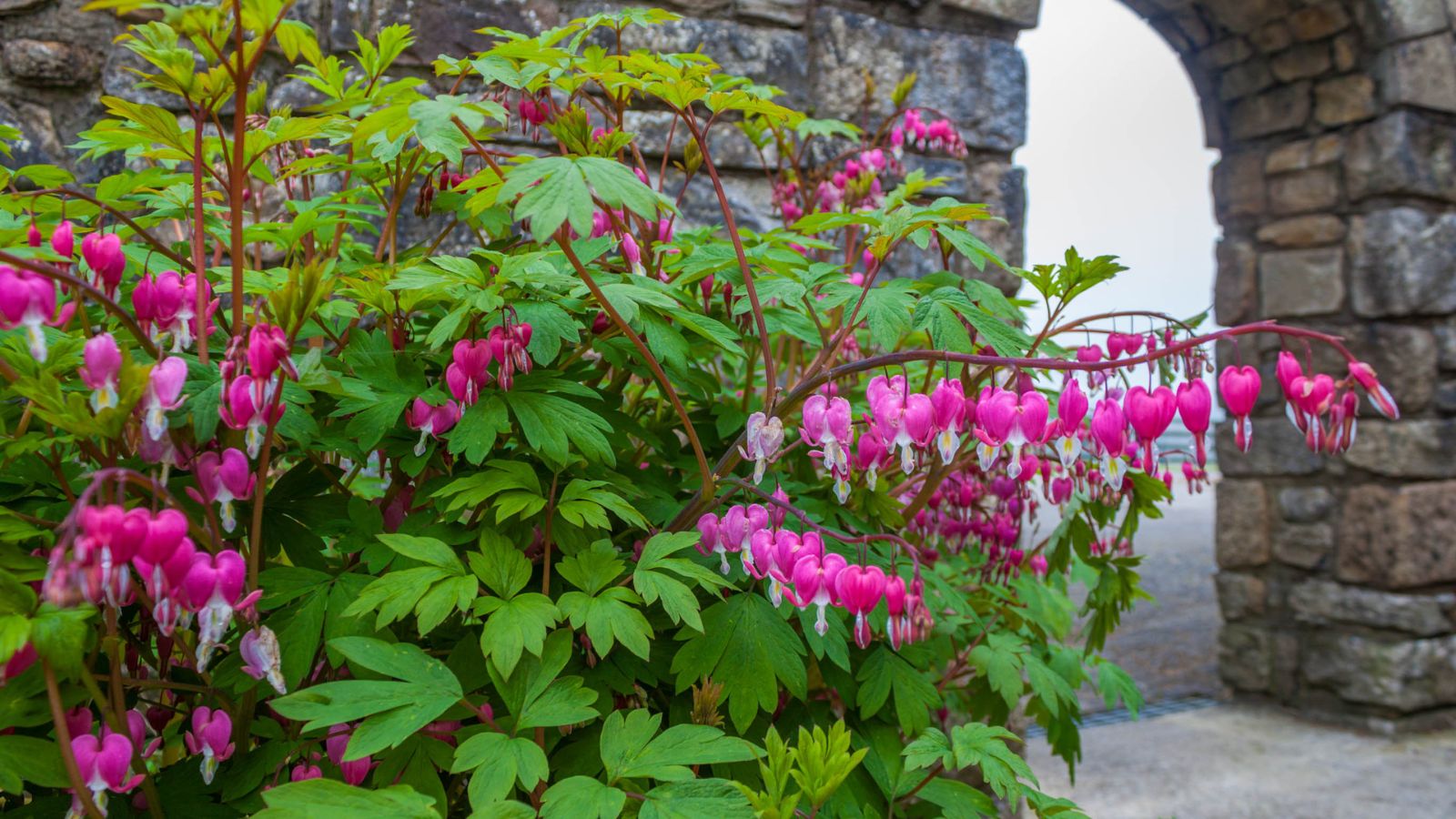
Known for heart-shaped flowers that dangle gracefully from arching stems, bleeding hearts add charm to shaded gardens. These flowers come in pink and white, and their delicate, fern-like foliage gives them a lovely texture, too. They also bloom excellently during the spring and early summer seasons.
Heuchera

Offering a wide range of foliage colors, from deep purples to bright greens and even variegated patterns, heuchera are vibrant flowers that do well in dappled shades. The delicate, bell-shaped flowers on their tall stems add to their appeal, making them an excellent choice for adding color and texture to your garden.
Astilbe
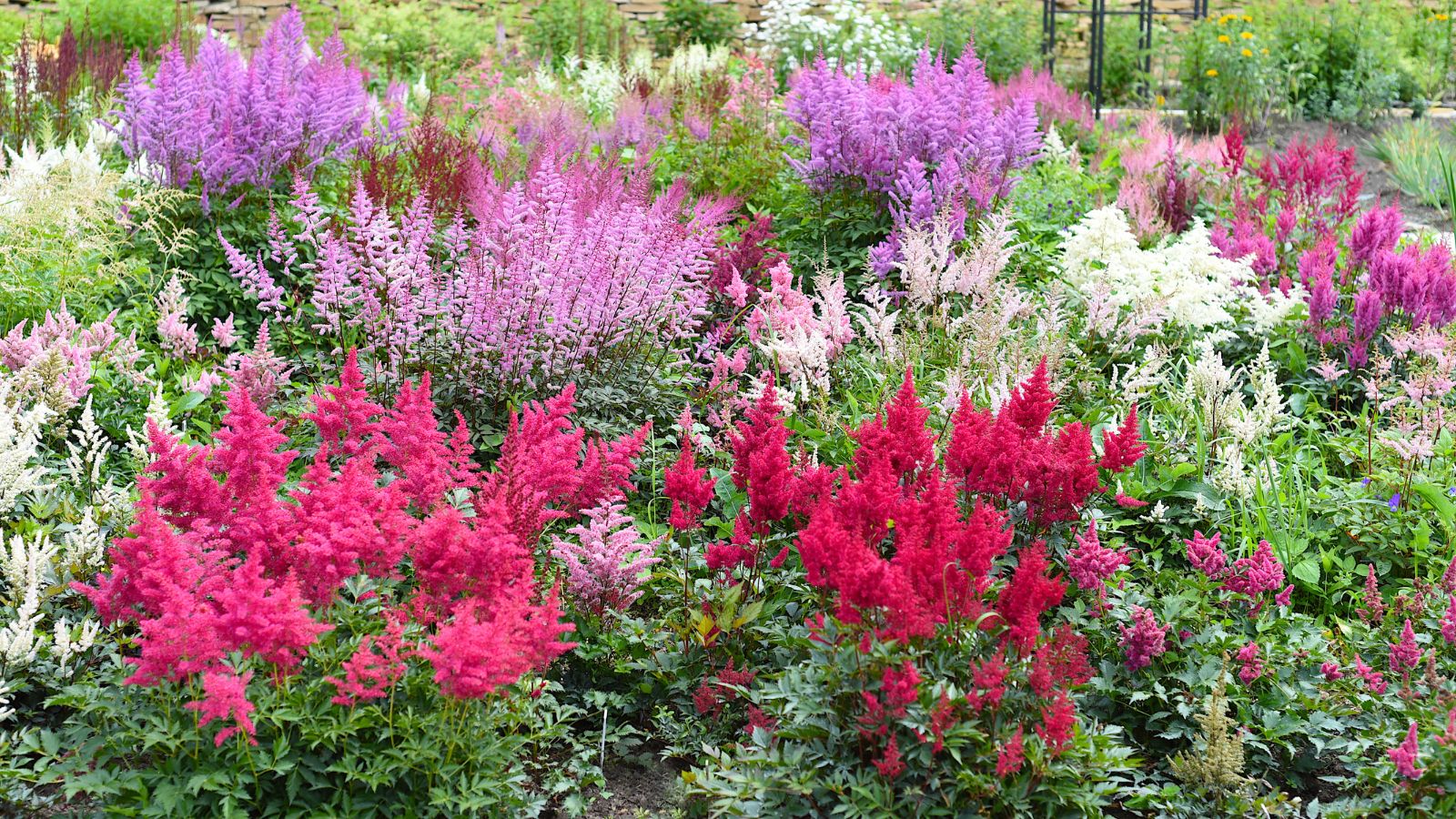
Producing feathery plumes of flowers in shades of pink, white, and red, astilbes are beautiful plants that will add vibrant colors to your garden. When it comes to giving protection against the sun, these plants will need to be in shade during the hottest parts of the day and also receive some sunlight at other times for their flowers to fully bloom.
Brunnera
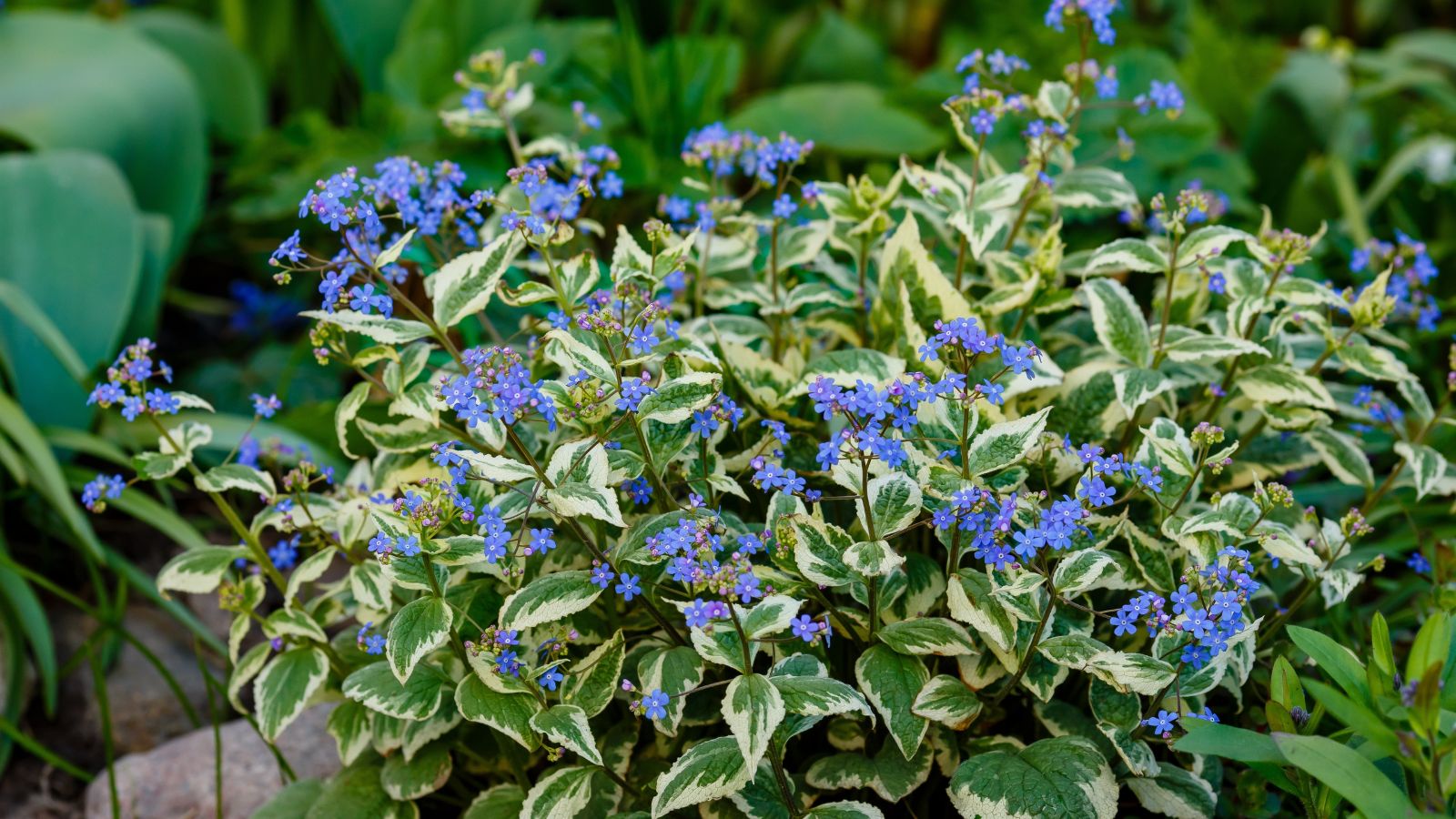
Valued for heart-shaped leaves and clusters of small, unforgettable blue flowers, brunnera is a delightful addition to your garden’s shaded areas. It also has attractive silver patterns that often decorate its foliage, and you get the best blooms and most healthy leaves when you grow yours in moist environments.
Lungwort
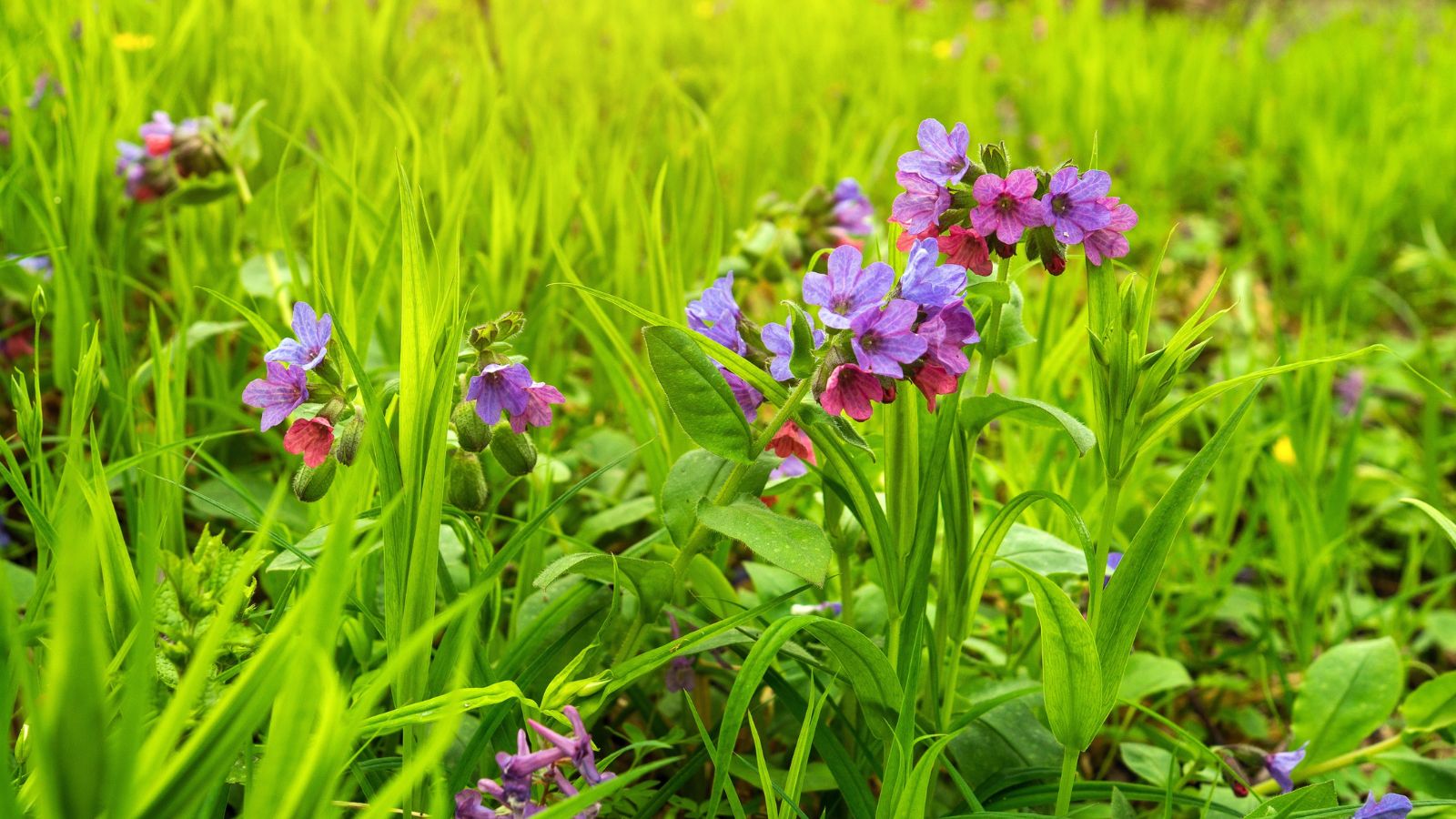
Featuring spotted or mottled leaves and clusters of small flowers in shades of blue, pink, and white, lungwort is a hardy perennial that thrives best in partially shady areas. Blooming in early spring, its foliage remains attractive throughout the season, making it a reliably attractive garden choice.
Solomon’s Seal

Solomon’s seals are characterized by arching stems with pairs of white, bell-shaped flowers hanging beneath the leaves. Although adaptable, they are most healthy in partial or fully shady spots, and you’ll also need moist, well-drained soil for this elegant plant to stand out in your garden.
Toad Lily

Producing exotic-looking flowers resembling orchids, toad lily adds unique interest to shaded gardens. Late summer and fall are its blooming seasons, providing color when many other plants have finished. Thriving in shady, moist areas, it can be a conversation starter.
Hellebore

Taken from The Spruce, “Hellebores prefer partial to full shade during the summer months but require more sunlight in winter.” Coming in beautiful white, pink, and deep purple variants, it’s best to plant these under a deciduous tree that retains its full leaves in summer and loses them during the winter months.
Ligularia
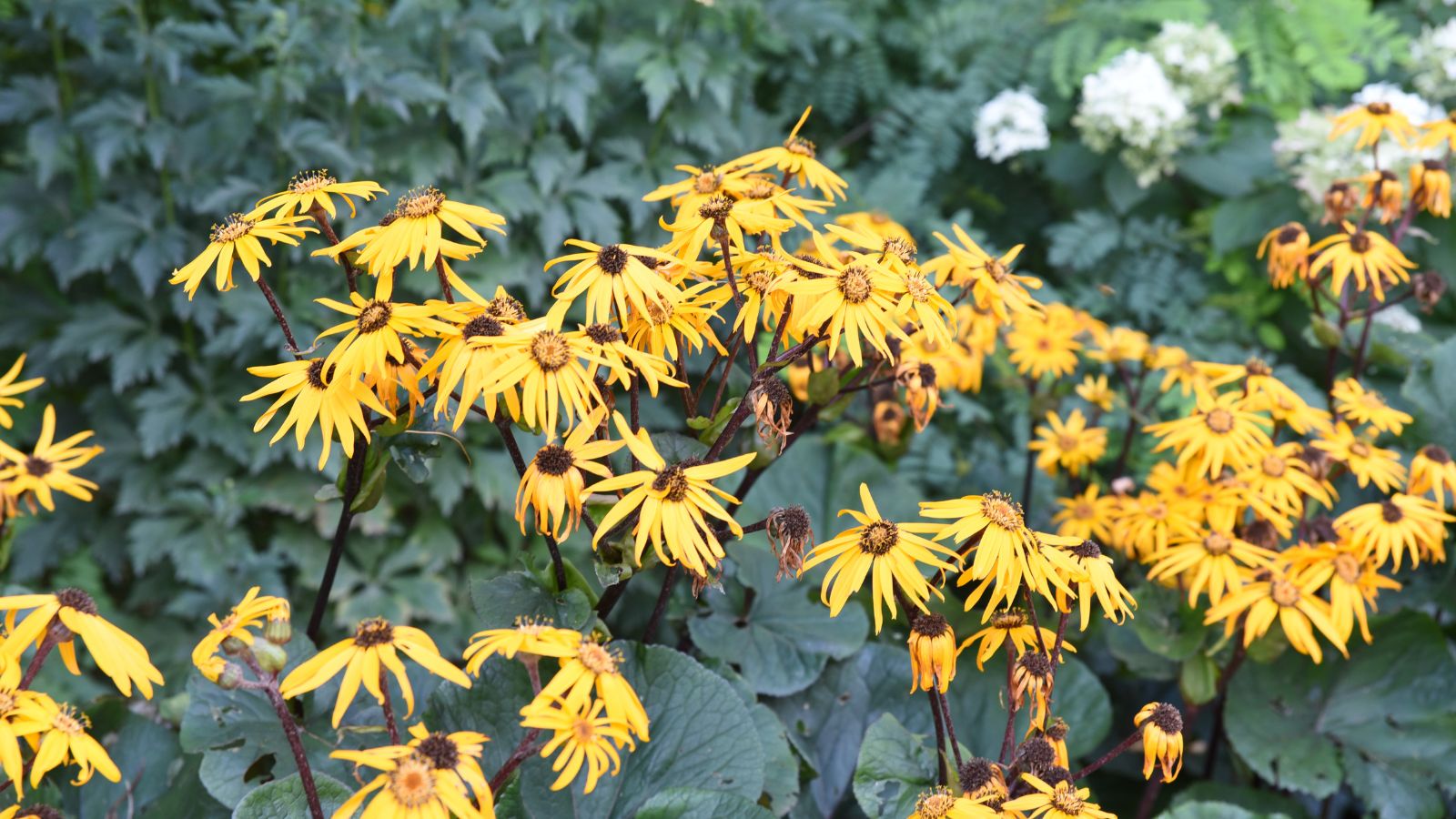
Bold, large leaves and bright yellow or orange flower spikes make ligularia a striking plant for shaded gardens. This attractively lush, tropical-looking plant prefers to grow in moist environments, and alongside providing aesthetics, it’s a choice plant that will attract pollinators to your garden as well.
Anemone
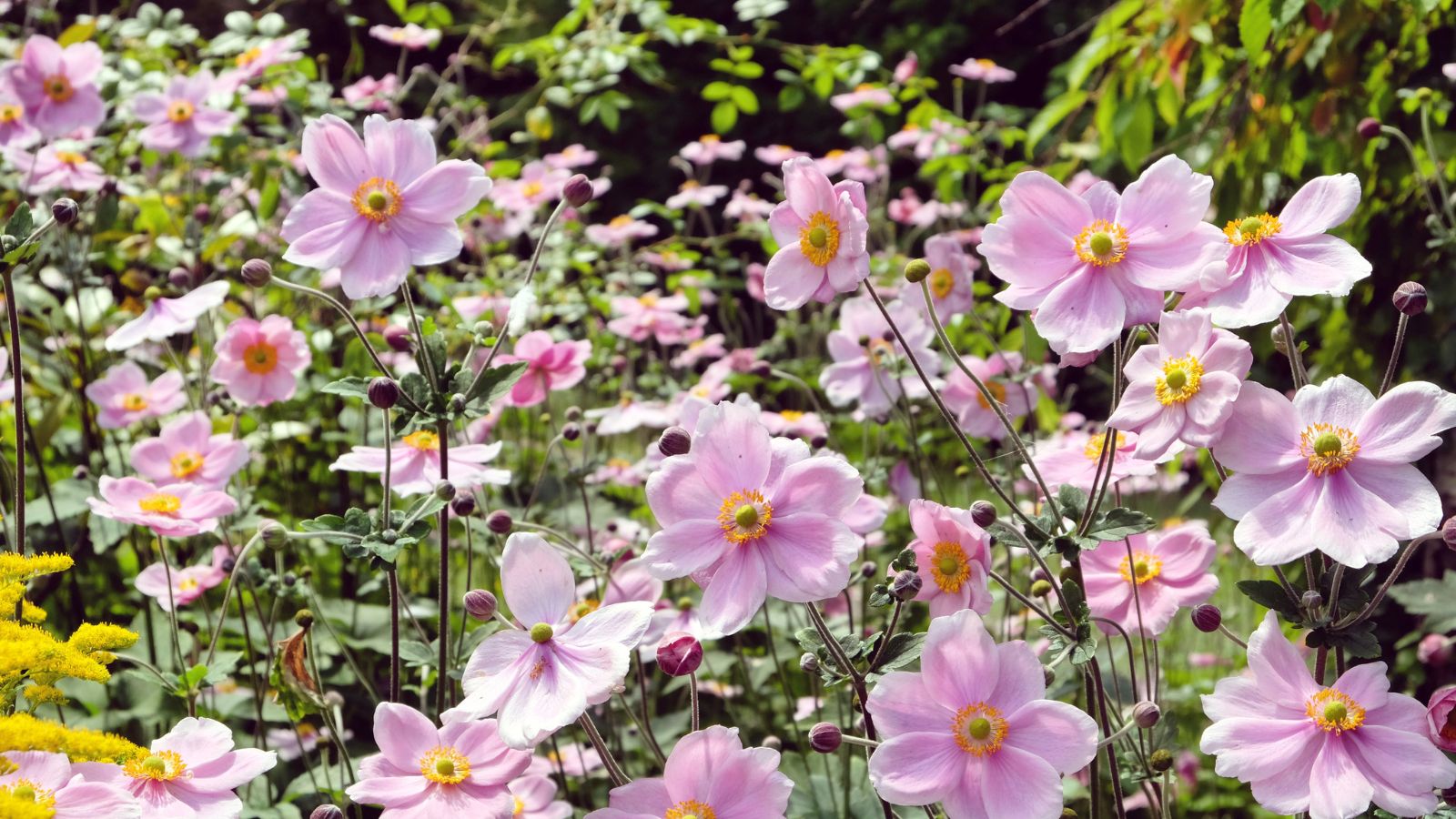
Japanese anemones bloom from late summer to late fall, and they offer you delicate, cup-shaped flowers in shades of pink, white, and purple. These plants are easy to grow and thrive in partial to full shade, extending interest in your garden by adding a burst of color late in the season.
Bergenia
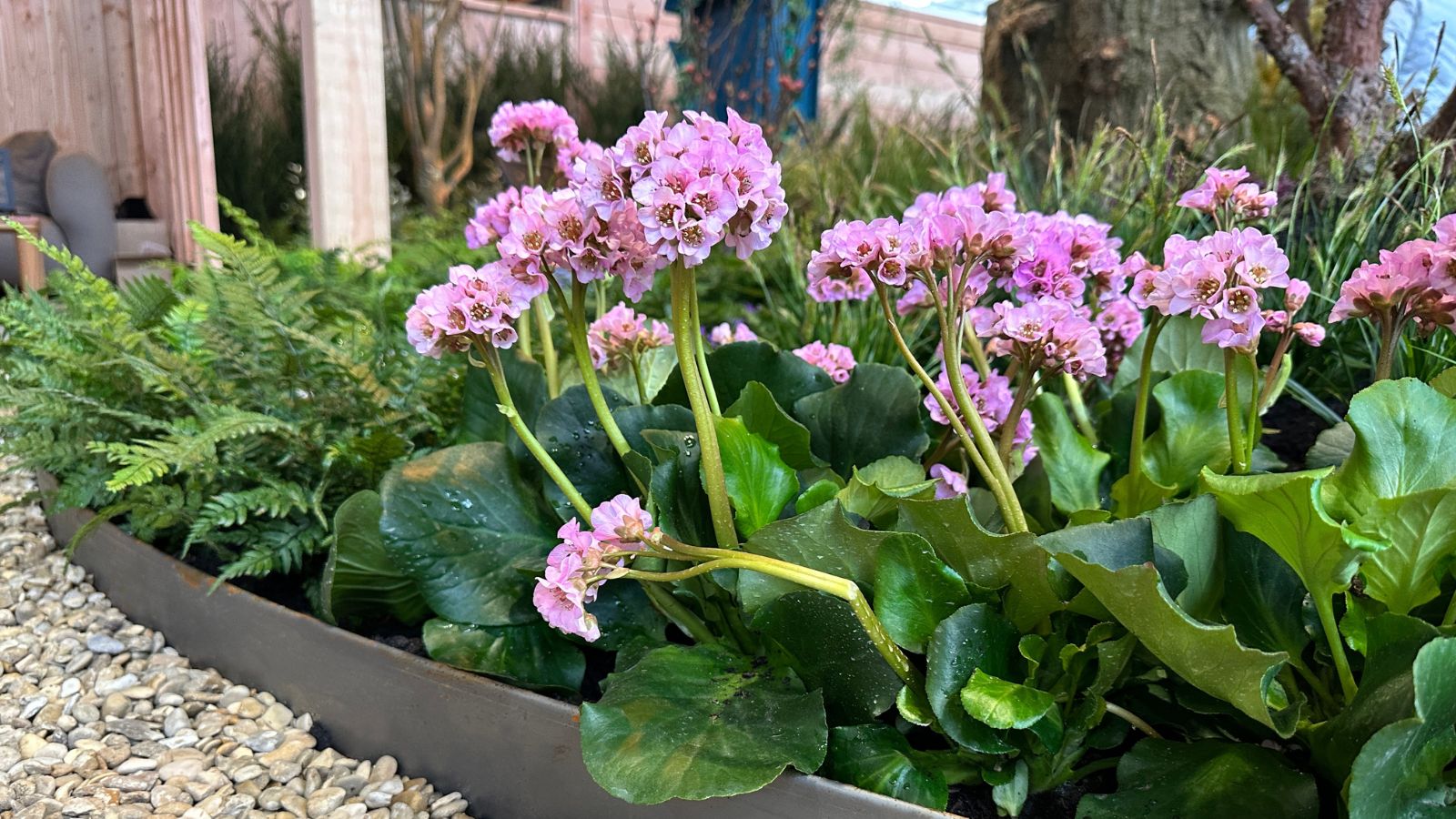
Also known as pigsqueak, bergenia retains year-round interest thanks to its large, leathery leaves. With clusters of pink, red, or white flowers blooming in spring, you get the best from this plant in fully shaded areas. Bergenia is also tolerant of a variety of soil conditions, making it a versatile garden choice.
Trillium
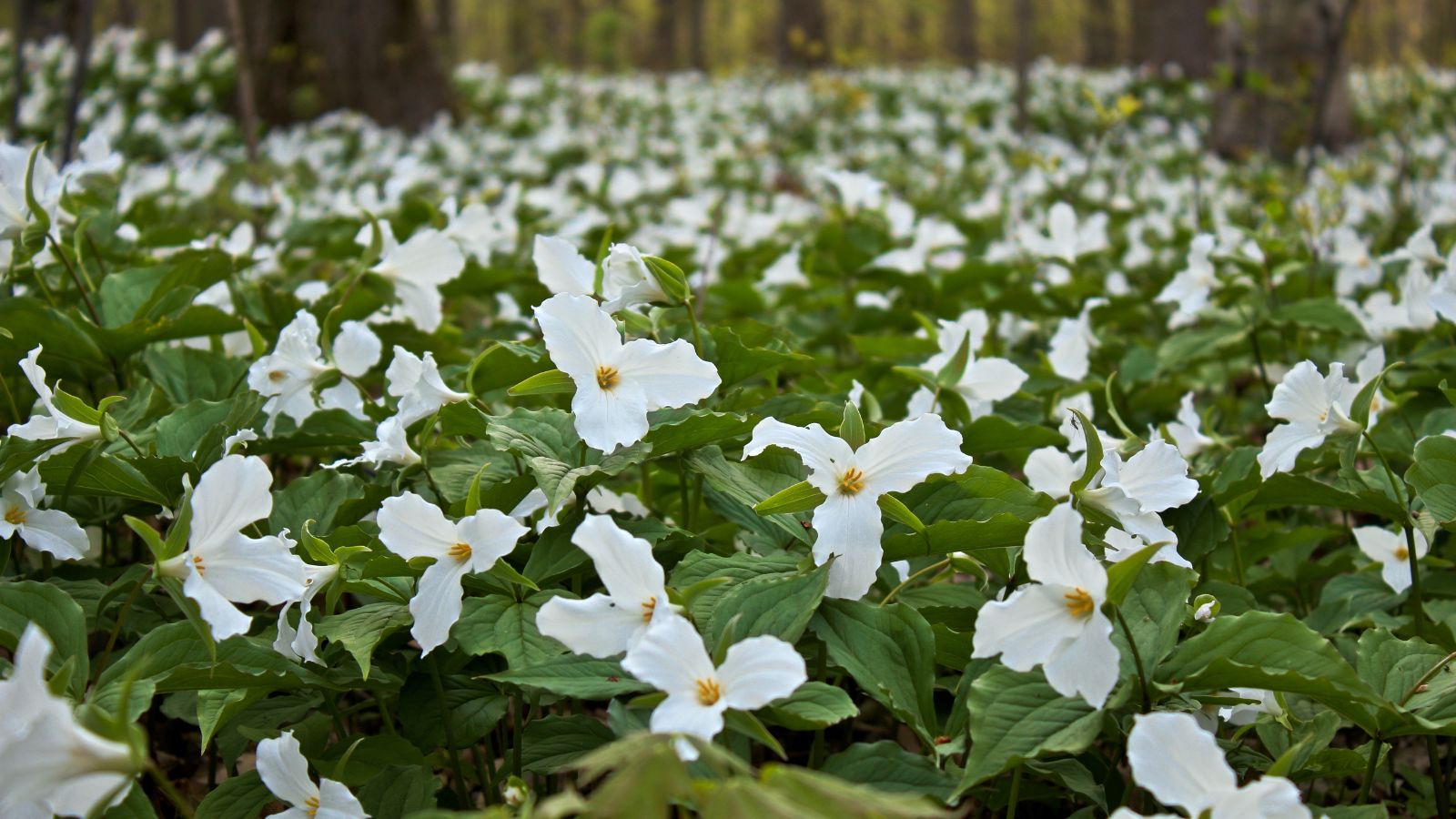
Trillium is a native wildflower that produces distinctive three-petaled flowers in shades of white, pink, and red. Early spring bloomers prefer shaded woodland settings, adding a touch of natural beauty to the garden. And their unique form ensures they stand out among other plants.
Epimedium

Also known as barrenwort, epimedium features heart-shaped leaves and delicate, spurred flowers in a variety of colors, including yellow, pink, and purple. They thrive in partial or dappled dry shade and are great ground covers that can help suppress weeds while adding a layer of beauty to the garden floor.
Foxglove
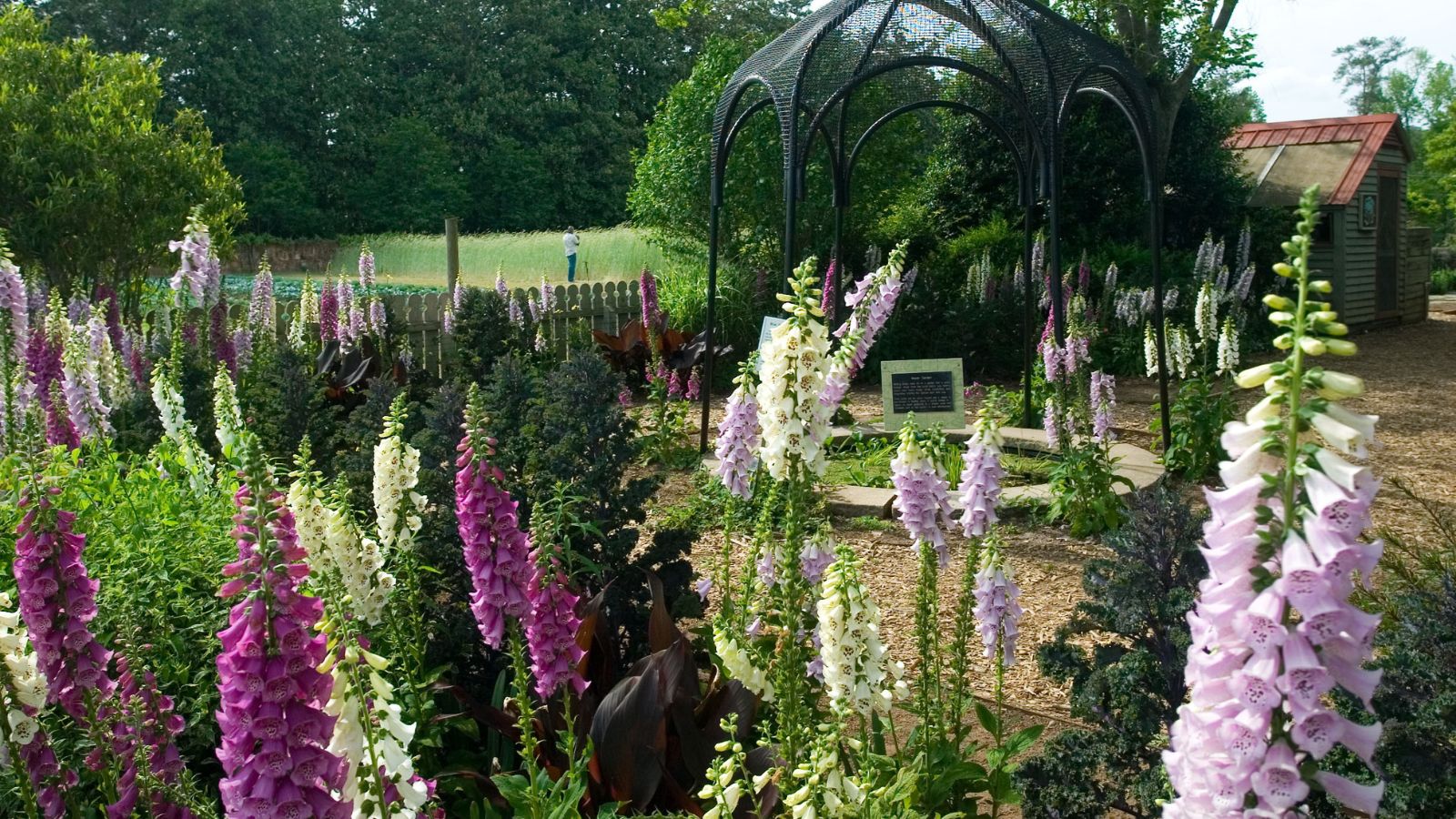
Producing tall spikes of tubular flowers in shades of pink, purple, white, and yellow, foxgloves are another species of plant that thrive in partial shade. Their blooms attract bees and hummingbirds, which helps with pollination and garden health, adding vertical interest to the garden.
Foamflower

Producing airy spikes of tiny, star-shaped flowers in spring, foamflower adds a touch of elegance to shaded gardens. According to Better Homes & Gardens, they thrive best in full shade, especially when planted in an area with moist (but not wet) soil. The plants also come with attractive, lobed leaves that often have dark markings, providing visual interest even when not in bloom.
Vinca

Vinca, or periwinkle, is a fast-growing ground cover with blue, purple, or white flowers. Glossy, evergreen leaves provide year-round interest, and it thrives in either partially or fully shaded areas. This plant is also easy to grow and can quickly cover bare spots, making it a practical choice for gardeners.
Up Next: 19 Things You Didn’t Realize Are Against The Law

Most laws are common sense, like those involving theft, property damage, or violence, but there are many lesser-known regulations that most people aren’t even aware of. This article reveals 19 illegal acts that may inadvertently turn you into a common criminal. Remember, ignorance of the law is no excuse for breaking it!
19 Things You Didn’t Realize Are Against The Law
18 Most Common Reasons Why Women Leave Their Husbands

All women have different preferences when it comes to their relationships and marriages. However, there are many universal behaviors, traits, and habits that commonly drive them to divorce. This list unveils the 18 most common reasons why women leave their husbands.
18 Most Common Reasons Why Women Leave Their Husbands
17 Behaviors That Make People Think Less of You

If you want to be accepted by those around you, you have to behave in certain ways. Obviously, you should still be yourself, but there are certain social ‘rules’ people should abide by, like avoiding these 17 behaviors that make people think less of you.
